A cute name for a buzzing new ingredient in the skincare game. The skincare industry has been highlighting peptides recently as a revolution in anti-aging products. But what exactly are they? Are they really worth all the hype?
What Are They?
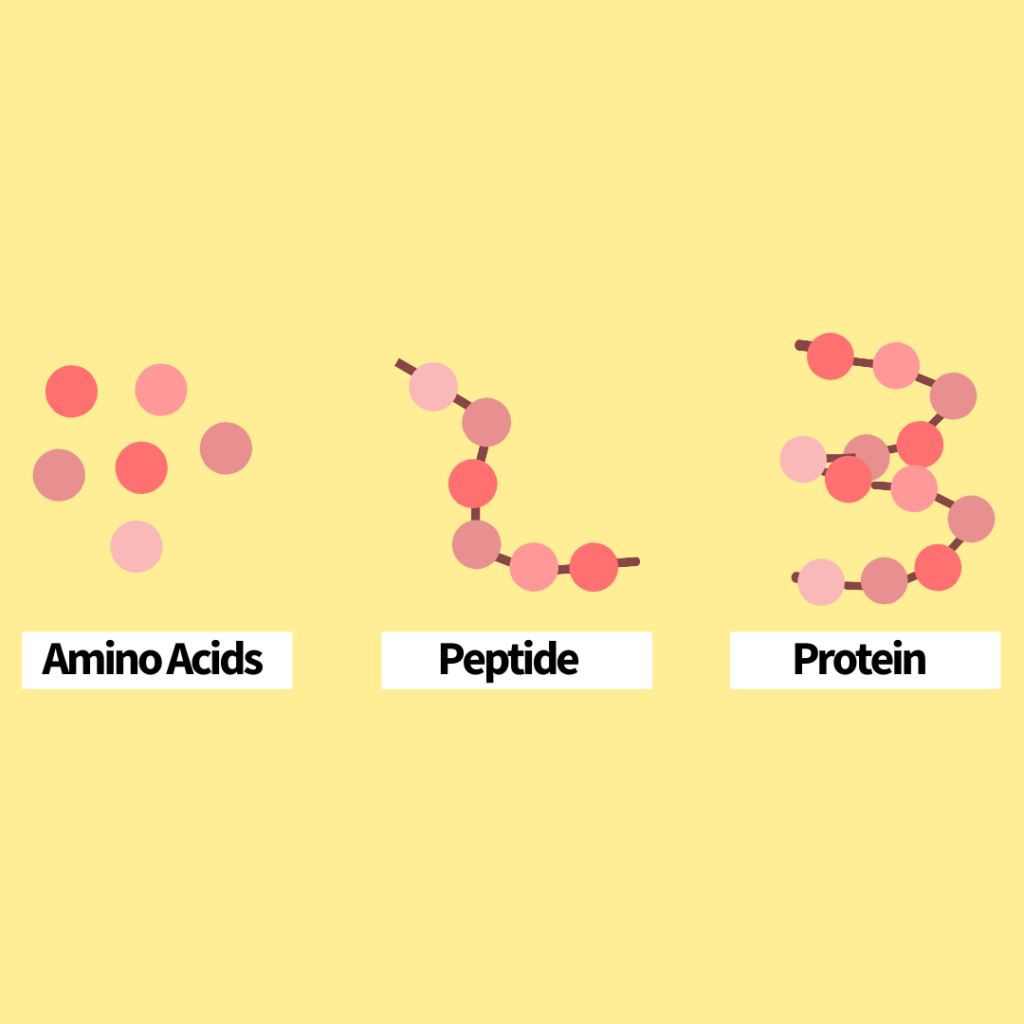
We all know how aging works. The elasticity and plumpness of our skin seems harder to maintain. Not to mention it decreases more over time after our mid-twenties. But thanks to peptides, we can combat this degradation!
Peptides are short little amino acid chains. When grouped together, they become a building block of protein. These protein blocks, which include collagen and elastic, occur naturally in our bodies. Collagen and elastin are essential for our skin to keep looking plump, firm, and elastic!
Fun fact! Peptides aren’t just limited to the skin. They’re also found in every cell in the human body! In short, they function as a biologic messenger.
How Topical Peptides Work
Now, what is essential for anti-aging? Collagen! However, collagen is a rather large protein that sadly can’t be replenished through topical skincare alone. Collagen is unable to penetrate the skin to help boost and replace the collagen that’s been lost. Thus peptides come to save the day! There’s a couple ways peptides work on our skin, so let’s take a look at each kind:
- Signaling
These prevent the degradation and increase the production of collagen and elastin.
- Carrier
These stabilize elements like copper and manganese. Essential for the wound healing process and enzymatic progress. This is crucial for breaking down collagen.
- Neurotransmitter inhibitors
Our muscles are always moving. And on the face these muscle movements can create early signs of aging such as fine lines and wrinkles. This is actually where the idea of “Botox” comes from. When the muscles are relaxed, hence no movement or contraction, there will be less noticeable lines and wrinkles. Synthetic peptides can mimic the molecules that cause muscle contractions and therefore relax the muscle. Therefore, making these effective at reducing the appearance of lines and wrinkles.
- Enzyme inhibitor
These peptides directly and indirectly inhibit enzymes that cause the breakdown of proteins. Studies on this type are still rather limited, but showing promising results!
- Structural protein
Lastly, structural protein peptides. Another structural protein of the skin is keratin. According to a study, they found that a hydrolyzed keratin peptide increases hydration and elasticity of the skin.
Examples
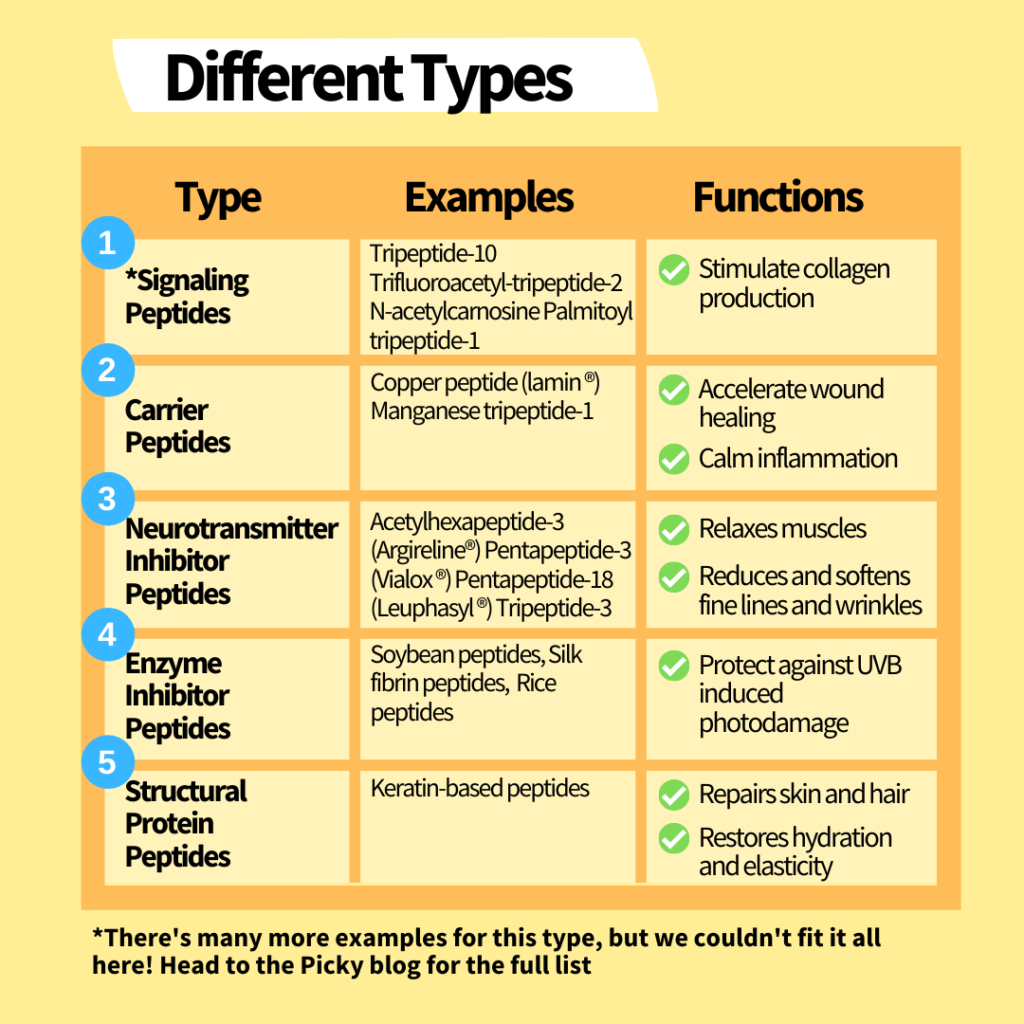
**(more for Signaling Peptides) Tripeptide-10 Trifluoroacetyl-tripeptide-2 N-acetylcarnosine Palmitoyl tripeptide-1 Palmitoyl tripeptide-3/5 Palmitoyl tripeptide-38 Palmitoyl Pentapeptide-4 (Matrixyl®) Palmitoyl Tetrapeptide-7 Acetyl tetrapeptide-9/11 Tetrapeptide-21 Tetrapeptide PKEK Hexapeptide-11 Hexapeptide-14
Adding Peptides To Your Skincare Routine
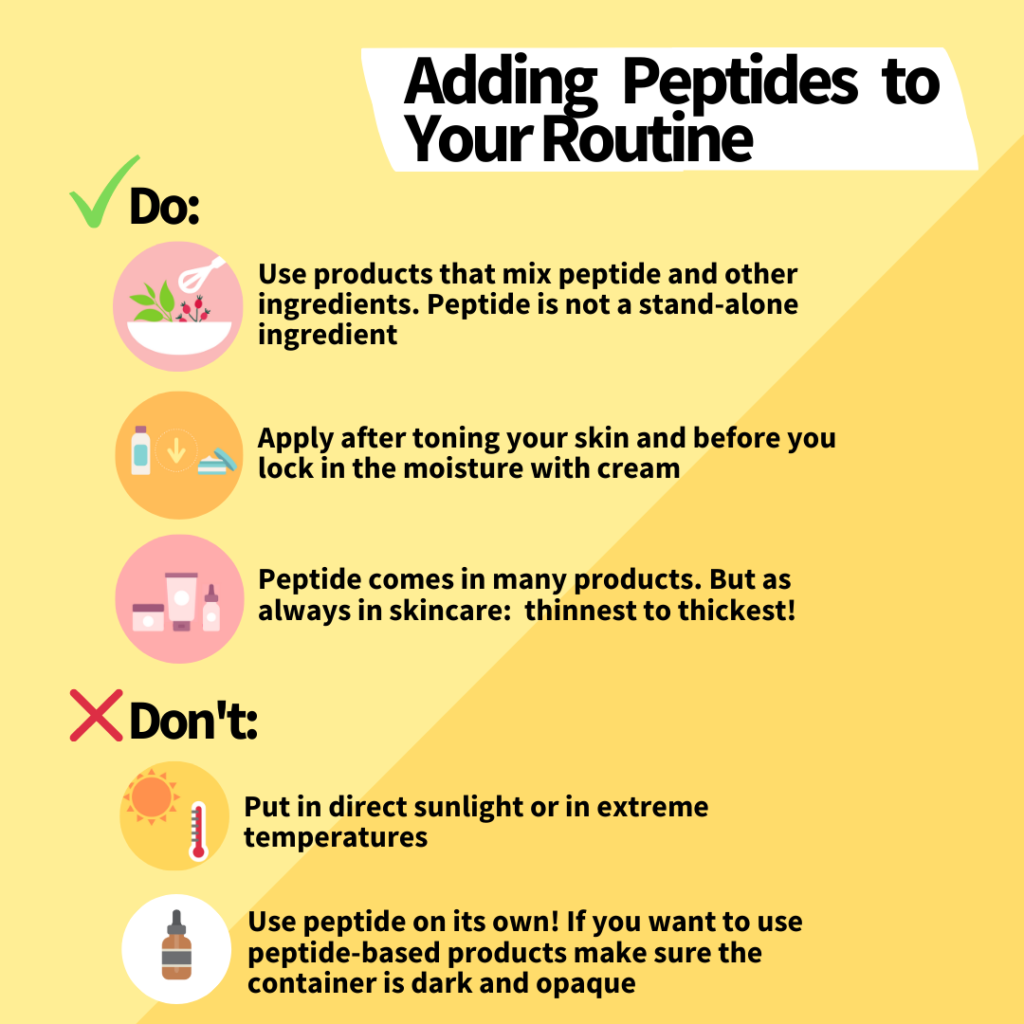
Peptides can come in many forms in the skincare industry. But it’s always best to find peptide products when they’re mixed with other beneficial ingredients. Peptides aren’t a stand-alone type of ingredient! Their shelf-life, stability, and effectiveness are still a grey area. However, if you’re looking for a peptide-based product, try looking for one packed in a dark opaque container. Keep it away from extreme temperatures or direct sunlight to maintain its stability and efficiency.
Since peptide products come in many forms, it’s good to follow the rule of thumb in skincare: Thinnest-thickest. But most peptide-based products come in a serum. So applying after toning is recommended, right before you seal in the moisture with a cream!
Advantages and Limitations
Peptides have a lot of untapped potential. However, there are more advance, stable and effective peptides currently under development!
Advantages:
- Can be a great alternative for those too sensitive to use retinoids.
- Has less side effects.
- Provides a more pleasant skincare experience since it doesn’t cause any purging or photosensitivity.
Limitations:
- Lack of studies in comparison to conventional anti-aging ‘hero ingredients.’
- The size and weight of larger sized peptides is still under debate, which hinders the total benefit they have on the skin.
- Price point for peptides can vary and often considered a more expensive ingredient in comparison to other commercialized ingredients.
The great thing about skincare is that it’s always evolving! New ingredients and methods are constantly being played with and studied. And peptides are the star example. Peptide-based skincare products are definitely still in their early stage, but we can look forward to more advanced and stable ones coming soon!
Want to start playing with peptides? Use the Mega Search Filter on our Picky app to search exclusively for products containing peptides! Curious for more skincare science content? Check out more from our blog and follow us on Instagram!


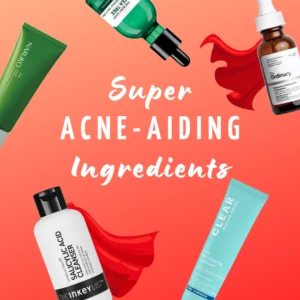


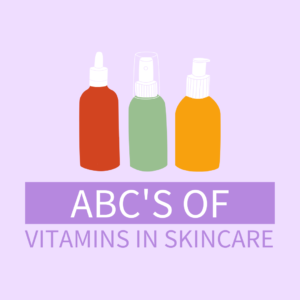










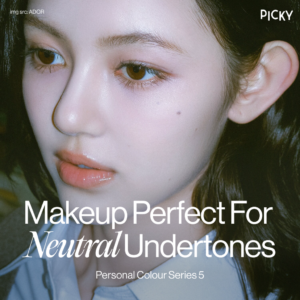


3 Responses
It’s hard to say
This was very interesting! I have started using more skincare products with “peptides” as part of the ingredients, I try to pick products that are directed at antiaging and they usually fall right in line with for dry/hydrating also but I have to always check because some people are antiaging /oily which is totally different. But I have noticed a difference in my skin & so have other people which is so nice when you get a compliment. I tell my friends try kbeauty you will never turn back! Thank You for breaking down peptides & clarifying some things for me.
thanks after sharing